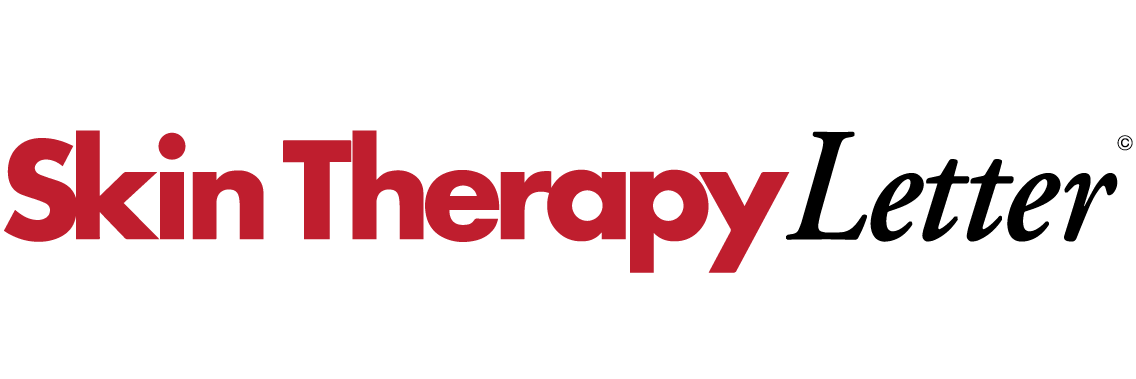Karen Michael, BMSc and Jerry Tan, MD, FRCPC
Schulich School of Medicine and Dentistry, Western University, Windsor, ON, Canada
Conflict of interest: Karen Michael has no conflicts. Jerry Tan is an advisor, consultant, speaker and/or trialist for Bausch, Cipher, Cutera, Galderma and Sun Pharma. Funding sources: None.
Abstract:
Oral isotretinoin continues to be unsurpassed in efficacy for acne. However, it is associated with potential adverse events including risk of fetal defects, necessitating appropriate mitigation strategies. Furthermore, the variance in bioavailability of the original formulation when ingested in fed versus fasted conditions can lead to differences in daily dosing and duration of exposure. Advances in formulation, with lidose encapsulation and subsequently with micronization, have led to iterative improvements in reducing bioavailability variation between fed and fasted conditions. Differences in bioavailability during fasting were 60% less for originator oral isotretinoin, 33% less for lidose-encapsulated form, and 20% less for micronized-isotretinoin formulation. The latter also demonstrated overall greater bioavailability such that a 20% dose reduction was required compared to the originator and lidose-encapsulated formulations. By reducing the effect of high-fat/high calorie food co-ingestion, this micronized formulation may facilitate clarity in determining appropriate oral isotretinoin dose requirements in achieving optimal patient outcomes.
Keywords: acne, isotretinoin, lidose, micronized, bioavailability
Oral isotretinoin was and continues to be the standard of treatment for severe or recalcitrant acne since regulatory approval was granted in the United States and Canada in 1982 and 1983, respectively 1,2 While its efficacy remains unsurpassed, the past 4 decades have witnessed a barrage of reports regarding potential serious adverse events and attendant litigation. This began with the teratogenic potential of isotretinoin and consequential requirements for rigorous consenting and monitoring to mitigate pregnancy risks. Subsequent concerns including associations with depression, suicide, and inflammatory bowel disease led to studies to address these topics in a rigorous scientific manner and develop risk mitigation measures. It is thus a testament to the enduring value of this medication for people with acne and their caregivers that it remains an available therapy.
Mechanism of Action
Oral isotretinoin is a potent sebo-suppressive agent, likely due to its apoptotic effect on human sebocytes.3 Furthermore, it normalizes monocyte toll-like receptor 2 responses to Cutibacterium acnes (C. acnes).4 It has recently been found to induce expression of the transcription factor p53, which controls other pathways involved in the pathogenesis of acne vulgaris such as FoxO1, androgen receptor and genes involved in the induction of autophagy and apoptosis.5 These effects likely lead to downstream impacts including reduction in C. acnes proliferation, pro-inflammatory lipid mediators and direct and indirect anti-inflammatory effects in the pilosebaceous unit.5
Formulations (Table 1)
As isotretinoin is a lipophilic molecule, the originator product Accutane® (Roche) was formulated with solubilization ingredients including hydrogenated vegetable oil and soybean oil.6 Nevertheless, it is only marginally soluble in the intestinal aqueous environment.6 Hence, co-administration with fatty meals was encouraged for greater absorption.6 Ingestion of a fatty meal can double drug bioavailability compared to the fasting state.6 Accordingly, important considerations include recognizing how varying dietary habits can influence drug absorption, which may in turn affect tolerability, safety, and efficacy.6
Subsequently, innovative formulations of isotretinoin have been developed to address the variability in absorption in fed and fasted states. The first iteration was lipid encapsulation, lidose-isotretinoin (Epuris®, Cipher Pharma; Absorica®, Sun Pharma), approved by the US FDA and Health Canada in 2012. Lipid encapsulation enhances bioavailability of isotretinoin with less dependency on high-fat, high-calorie meals. In this process, isotretinoin is presolubilized in a lipid matrix leading to greater and faster absorption with less food dependency.6 When compared with the conventional formulation of isotretinoin, lidose-isotretinoin was absorbed to a greater extent in the fasting state but equivalent in absorption when coadministered with a high-fat/calorie meal.7 It has been shown that lidose-isotretinoin delivered almost twice as much isotretinoin after an overnight fast.7 During fasting, isotretinoin bioavailability was 67% of that in the fed state with lidose-isotretinoin compared to 40% for conventional isotretinoin.7,8 Moreover, lidose-isotretinoin was found to be noninferior to the conventional formulation in a blinded randomized controlled trial in efficacy and safety for severe recalcitrant nodular acne.9
A more recent development was a formulation combining isotretinoin micronization with a lidose vehicle carrier system (micronized-isotretinoin; Absorica LD®, Sun Pharma) that was approved by the FDA in 2019 and Health Canada in 2023. This advancement was based on recognition that drug solubility is also dependent on particle size, with smaller sizes resulting in higher penetration and distribution across a larger total surface area. In micronization, isotretinoin particles are reduced to micrometer or nanometer size. The newest formulation of isotretinoin combines both micronization and lipid encapsulation to enhance solubility, absorption, and bioavailability.6 For comparison, conventional formulations of isotretinoin have a mean particle size of about 100 μm while micronized isotretinoin can reach a particle size of 10 μm and the median size (D50) is less than 15 μm.6,10

*available in Canada
Bioequivalence
This micronized formulation was evaluated as an abbreviated new drug application as isotretinoin with lidose encapsulation had been previously approved by the FDA. The demonstration of bioequivalence required pharmacokinetic studies evaluating concentration maximum (Cmax; peak serum concentration after administration) and extent of absorption (AUC; area under the curve).11
The pivotal trial for micronized-isotretinoin comprised 2 open-label, crossover pharmacokinetic studies comparing bioavailability of micronized-isotretinoin 32 mg against lidose-isotretinoin 40 mg in healthy adults. A prior internal study by the sponsor determined that micronized-isotretinoin 0.8 mg/kg would achieve similar plasma levels to lidose-isotretinoin 1 mg/kg, or a 20% dose reduction.12 One study assessed bioequivalence in the fed state and assessed the effect of food (Figure 1A), and the second evaluated bioavailability in the fasted state (Figure 1B).12 The fed state was based on administration of a standardized high-fat, high-calorie breakfast as defined by the FDA containing 150 protein calories, 250 carbohydrate calories, and 500 fat calories. In practice, this comprised 2 fried eggs, 2 bacon strips, 4 oz hash browns, 2 slices buttered toast, and 8 oz whole milk.12


In the first study, healthy adults of both genders aged 18 years or greater were enrolled in a 3 treatment, 3 period, crossover study. Subjects were sequentially exposed to a single dose of either micronized-isotretinoin 32 mg after an overnight fast (minimum 10 hours); micronized-isotretinoin 32 mg after a high-fat/caloric meal; or lidose-isotretinoin 40 mg after a high-fat/caloric meal. For each subject, crossover was undertaken with intervening durations of 21 days for exposure to each of the 3 treatments. Data were available for 65 subjects. In the fed state, Cmax and AUC parameters were similar for those receiving micronized-isotretinoin 32 mg and for lidose-isotretinoin 40 mg. The comparative results fell within the 80-125% range for bioequivalence, inferring that micronizedisotretinoin 32 mg was bioequivalent to lidose-isotretinoin 40 mg under fed conditions.12
The pharmacokinetic effect of food on micronized-isotretinoin 32 mg showed that the high-fat/calorie meal delayed maximum isotretinoin absorption (Tmax) by 1.5 hours. Furthermore, food increased AUC by just over 20%. By comparison, the food effect was 60% for originator isotretinoin and was 33% for lidoseisotretinoin.12
The second study evaluated relative bioavailability in the fasted state. Data from 18 subjects were available. Cmax and AUC results for micronized-isotretinoin 32 mg were almost double those for lidose-isotretinoin 40 mg. Under fasted conditions, micronizedisotretinoin 32 mg had almost 2 times greater bioavailability compared with lidose-isotretinoin 40 mg.12
Conclusion
Prior literature on oral isotretinoin regarding benefit/risk profiles of low versus conventional isotretinoin dosing and the utility of cumulative dosing in achieving remissions focused on originator and conventional formulations. The present micronized-isotretinoin formulation, due to greater bioavailability, requires transforming these metrics into doses 20% lower than those published for originator and conventional formulations. The pivotal trials for micronized-isotretinoin were comprised of fed bioequivalence, food effect and fasting studies compared to lidose-isotretinoin. As micronized-isotretinoin 32 mg was found to be bioequivalent to lidose-isotretinoin 40 mg under fed conditions, these formulations are not interchangeable. Furthermore, in fasted conditions, micronized-isotretinoin confers 2 times greater bioavailability compared with lidose-isotretinoin 40 mg. In comparing absorption during fed versus fasting conditions, a 20% increase was observed with micronized-isotretinoin compared to 33% with lidoseisotretinoin. Thus, micronized-isotretinoin bioavailability was less food dependent. Micronized-isotretinoin substantially reduced the food effect for oral isotretinoin bioavailability.
References
- Asai Y, Baibergenova A, Dutil M, et al. Management of acne: Canadian clinical practice guideline. CMAJ. 2016 Feb 2;188(2):118-26.
- American Academy of Dermatology Association. Acne clinical guidelines [internet]. American Academy of Dermatology Association; 2024 [cited 2023 Nov 25]. Available from: https://www.aad.org/member/clinicalquality/guidelines/acne
- Nelson AM, Gilliland KL, Cong Z, et al. 13-cis retinoic acid induces apoptosis and cell cycle arrest in human SEB-1 sebocytes. J Invest Dermatol. 2006 Oct;126(10):2178-89.
- Dispenza MC, Wolpert EB, Gilliland KL, et al. Systemic isotretinoin therapy normalizes exaggerated TLR-2-mediated innate immune responses in acne patients. J Invest Dermatol. 2012 Sep;132(9):2198-205.
- Agamia NF, El Mulla KF, Alsayed NM, et al. Isotretinoin treatment upregulates the expression of p53 in the skin and sebaceous glands of patients with acne vulgaris. Arch Dermatol Res. 2023 Jul;315(5):1355-65.
- Bellomo R, Brunner M, Tadjally E. New formulations of isotretinoin for acne treatment: expanded options and clinical implications. J Clin Aesthet Dermatol. 2021 Dec;14(12 Suppl 1):s18-s23.
- Webster GF, Leyden JJ, Gross JA. Comparative pharmacokinetic profiles of a novel isotretinoin formulation (isotretinoin-Lidose) and the innovator isotretinoin formulation: a randomized, 4-treatment, crossover study. J Am Acad Dermatol. 2013 Nov;69(5):762-7.
- Jones M, Armstrong AW, Baldwin H, et al. Article: advances in oral isotretinoin therapy. J Drugs Dermatol. 2021 May 1;20(5):s5-s11.
- Webster GF, Leyden JJ, Gross JA. Results of a phase III, double-blind, randomized, parallel-group, non-inferiority study evaluating the safety and efficacy of isotretinoin-Lidose in patients with severe recalcitrant nodular acne. J Drugs Dermatol. 2014 Jun;13(6):665-70.
- Sun Pharmaceutical Industries Limited. Low dose oral pharmaceutical composition of isotretinoin [internet]. Justia Patents: 2017 Feb 28 [cited on 2023 Dec 20]. Available from: https://patents.justia.com/patent/9750711
- U.S. Department of Health and Human Services, Food and Drug Administration, Center for Drug Evaluation and Research (CDER). Bioequivalence Studies With Pharmacokinetic Endpoints for Drugs Submitted Under an ANDA Guidance for Industry. August 2021.
- Madan S, Kumar S, Segal J. Comparative pharmacokinetic profiles of a novel low-dose micronized-isotretinoin 32 mg formulation and lidose-isotretinoin 40 mg in fed and fasted conditions: two open-label, randomized, crossover studies in healthy adult participants. Acta Derm Venereol. 2020 Feb 5;100(4):adv00049.













